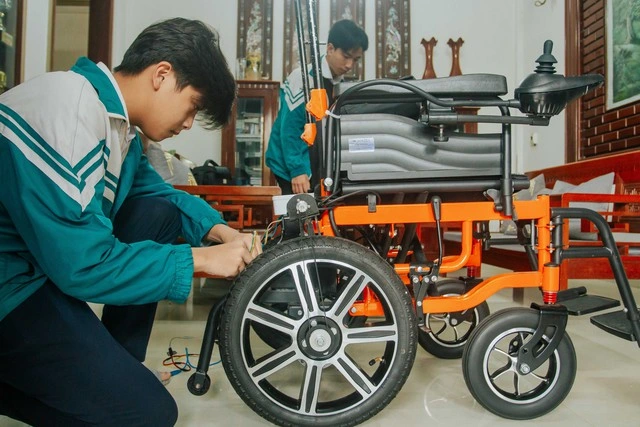Susannah Hills, a pediatric tracheal surgeon at Columbia University Medical Center, noticed a patch of scaly, flaky skin behind her left ear a little over a year ago. She thought it was eczema, according to Insider .

Susannah Hills had no idea the peeling skin behind her ear was skin cancer.
There are several different types of eczema, the most common of which is atopic dermatitis. The characteristic symptoms of the condition are itchy, red, and dry skin.
Ms. Hills bought several steroid creams to apply. However, despite using many of them, her skin condition did not improve. After more than a year, she went to a dermatologist for a biopsy. A biopsy is a test in which a sample of tissue is removed for examination under a microscope or chemical analysis. This is a method commonly used to determine cancer.
The biopsy results shocked Hills. The scaly, flaky patch of skin was actually basal cell carcinoma, the most common type of skin cancer. The main reason she was surprised by the results was because skin cancer is often caused by overexposure to ultraviolet rays from the sun, and the skin below her ear was often covered by her hair.
"I was so confused. I thought I had protected myself very well from the sun," Ms. Hills shared.
The woman also said that over the years she has been very conscious of protecting her skin. She usually applies sunscreen every day and spends most of her time indoors.
As for the skin cancer, Ms. Hills believes that the skin damage may have started many years ago, when she went to the beach a lot. In addition, her mother also had skin cancer, and it is likely that genetic factors also contributed to the disease. Studies show that having a family member with skin cancer can double the risk of developing the disease.
Ms. Hills is currently being treated for skin cancer behind her ear. Basal cell carcinoma is curable if caught early and treated promptly.
Most skin cancers are caused by long-term or short-term exposure to the sun. Ultraviolet rays in sunlight damage the DNA in skin cells. However, it may take years for cancer to develop from this damage.
In addition, skin cancer can appear in unexpected places such as the eyelids or areas that are not exposed to sunlight such as the palms of the hands and soles of the feet. If you see unusual signs such as peeling skin, scaly skin that does not heal, moles with irregular borders or skin lesions that do not heal, you should see a doctor immediately, according to Insider.
Source link



![[Photo] Special relics at the Vietnam Military History Museum associated with the heroic April 30th](https://vstatic.vietnam.vn/vietnam/resource/IMAGE/2025/4/3/a49d65b17b804e398de42bc2caba8368)
![[Photo] Comrade Khamtay Siphandone - a leader who contributed to fostering Vietnam-Laos relations](https://vstatic.vietnam.vn/vietnam/resource/IMAGE/2025/4/3/3d83ed2d26e2426fabd41862661dfff2)
![[Photo] Prime Minister Pham Minh Chinh receives CEO of Standard Chartered Group](https://vstatic.vietnam.vn/vietnam/resource/IMAGE/2025/4/2/125507ba412d4ebfb091fa7ddb936b3b)
![[Photo] Prime Minister Pham Minh Chinh receives Deputy Prime Minister of the Republic of Belarus Anatoly Sivak](https://vstatic.vietnam.vn/vietnam/resource/IMAGE/2025/4/2/79cdb685820a45868602e2fa576977a0)












![[Video] Hanoi ensures adequate supply of medicine to prevent and control epidemics during the changing seasons](https://vstatic.vietnam.vn/vietnam/resource/IMAGE/2025/4/3/ad5d4d3bad3b469ba636737dc4e6efd1)


![[Video] Increasing responsibility and benefits when providing health insurance examination and treatment](https://vstatic.vietnam.vn/vietnam/resource/IMAGE/2025/4/3/c3e3c29e48d3425e8ea6a9c4c2b30640)











































































Comment (0)